Darkest Dungeon 2 : Less Dungeons, More Darkness
An insane road trip
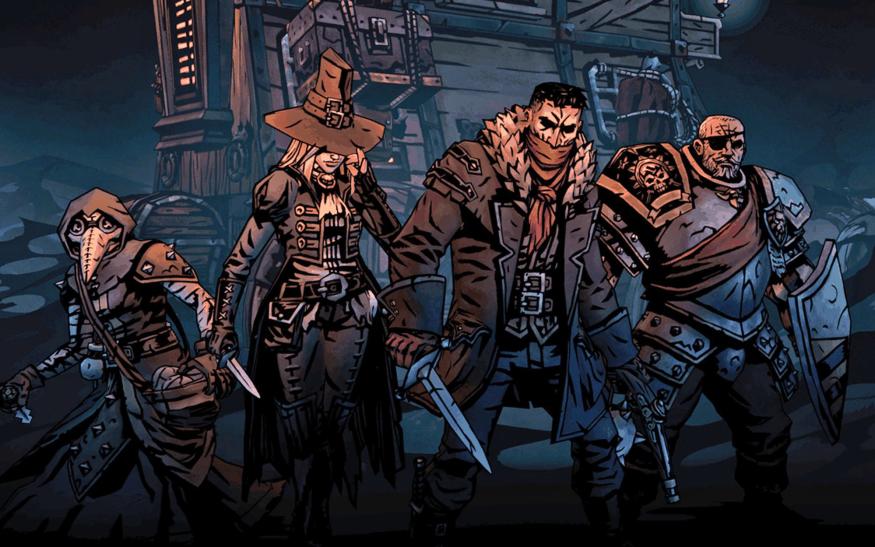
Darkest Dungeon is one of the most highly praised games of the past decade. It cemented Redhook Studios in the indie space and was both a Kickstarter and early access success. When news broke of a sequel, fans were waiting in line to get their dungeon crawling on, but Redhook decided to do something different. For the sequel, we have a game that feels like a soft reboot, with very hard difficulty spikes, which leaves us with a follow-up that may not appeal at all to fans of the original.
On the Road Again
The game's story is that the world as we know it is teetering on the edge of madness. Something has gone horribly wrong — society has broken down, monsters roam the world, and everyone who is left is either insane or on the verge of dying. We are no longer fixed to an estate, but we must roam what remains of the world to find the forces that threaten us all and stop them before it is too late.
From the get-go, Darkest Dungeon 2 features an impressive graphical update, which to a series that already looked fantastic is saying something. Using 3D, shading, and more animation, characters and enemies alike have far more personality, or are far more disturbing in the enemy’s case.
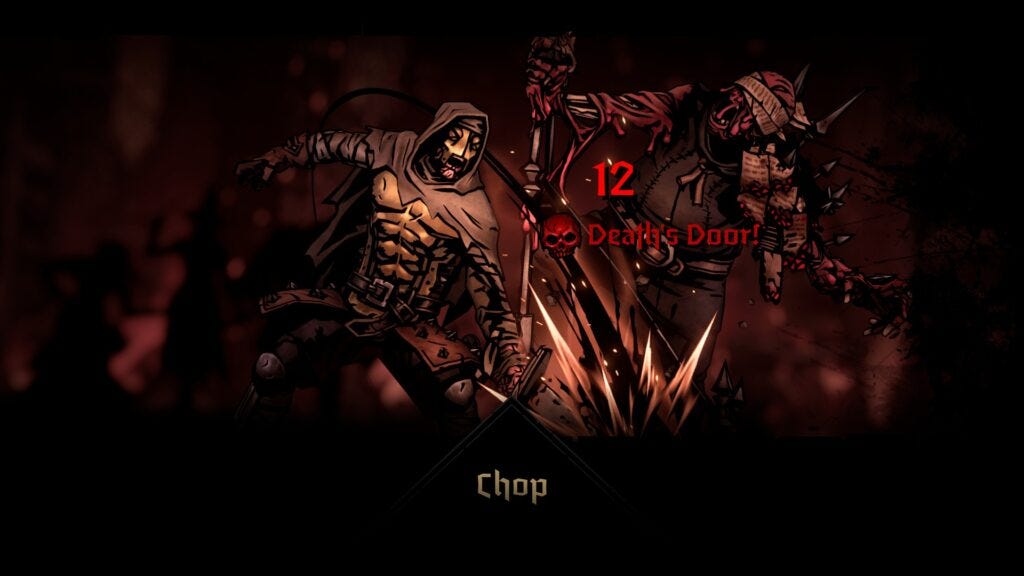
After you get done being impressed, you’ll find that this is a far different beast compared to the first game.
A Roguelite To Hell and Back
The original game’s structure was that of a grand campaign format — with the player having the goal to reach and defeat the darkest dungeon by improving their village and cultivating teams to do the job. Part of the complaint about the difficulty of the first game was how the punishment for failing magnified the further you got — with the final dungeon being a huge wall for a lot of people to keep playing.
Now with the sequel, the game is built around a rogue-lite format. Your mission is to defeat five acts of escalating difficulty. For each one, you must build a team of four and then choose a region to start in. Each region will have you driving your stagecoach from one end to the other, deciding at branches in the road as to where you will go next.
There are many points of interest that can help or greatly hurt your chances of surviving. Your wagon comes with armor and wheel strength that can be broken during events; this can lead to additional battles while you repair them. “Loathing” is a supernatural force that builds up as you run into specific events, and if you don’t deal with it, the boss will become harder as a result. At the end of each region, you will return to an inn to rest, buy items, and try to get your party back into fighting shape. The party dynamics and skills have also been given a complete remodel that I’ll talk about next.
Source: YouTube.
Win or lose a run, and you’ll unlock candles which are the game’s persistent currency. These candles can be used to improve basic stats, unlock new characters and items, and are there to hopefully give you the edge you need to survive.
Meatier Characters
Everything that you knew about the character dynamics and progression from the first game is gone. There are no more weapon and armor upgrades, camping skills, or the ability to upgrade abilities multiple times. “Mastery points” that are unlocked from beating certain fights are used to upgrade character skills only once per run.
The different classes have been branched out and redesigned in regards to how combat works (more on that in the following section). While you are still limited to five active skills per character, you will now need to find hero shrines during the game to unlock new skills and learn about the backstories of the characters in order to add more skills to their kit.
Stress and character interactions make a return, but are handled differently now. Stress will tick up during random events or from specific enemy attacks. When it hits 10 points, the character can either meltdown or gain resolve — massively reducing their health or becoming stronger respectively. Characters can interact with each other and gain or lose relationship points. This can lead to events where characters either become friends or hate each other. Friends will get synergy combos with randomly chosen skills, while those that hate others can cause each other to take debuffs when they use certain actions. The actual skill design is another massive change that I’ll come back to in the next section.
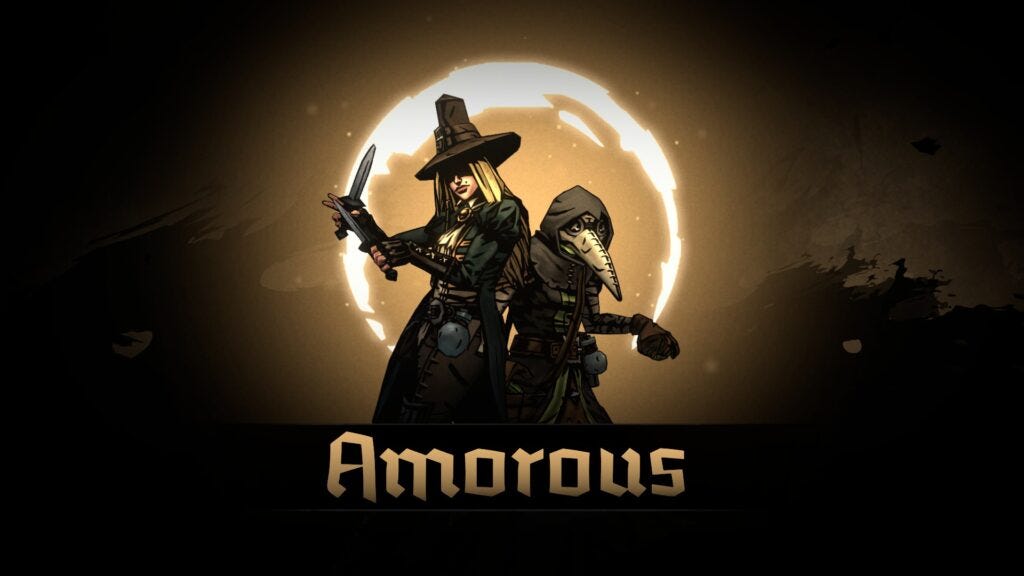
Just like before, if someone’s health hits zero, they will be on “death’s door” and the next hit has a chance of completely killing them and removing them from the rest of the run. In a surprising twist, larger enemies now have their own version of death’s door, making them a bit harder to take out. Another aspect of how the design has changed is that the different characters have had their skills adjusted to work with other characters.
Deterministic Dungeon
The original game was known for being very punishing and somewhat unfair to new players. Everything was built off of randomness — from attacking and healing, to what the enemy would do. This was a game where you could do a dungeon and barely have any problems, or on the first battle the enemy critically hits multiple times and completely rips apart your party without any say in the matter.
Part of the redesign in Darkest Dungeon 2 was stripping down a lot of the randomness that could occur. For starters, every attack in the game has a base 100% chance to hit an enemy — likewise, the enemy will never miss their attack on you. However, randomness and control are now built into a very extensive buffing and debuff system built around “tokens”. Both your characters and the enemies are armed with skills that can inflict a wide assortment of modifiers. While skills have a small base chance of "critting", there are now modifiers that greatly raise that chance.
There are no longer skills that just do one thing; every skill now has synergies or conditional aspects based on the person using them or the status of the target. A simple example is the new “target” debuff; certain skills can inflict a target on an enemy or character. Many skills in the game now receive additional damage, increased crit, or other effects if they hit someone with a target. There are debuffs that can give a character a chance at avoiding damage — either increasing their dodge rate or lowering the enemy’s chance to hit. These skills have a fixed 50% chance to work, or 75% with their upgraded versions.
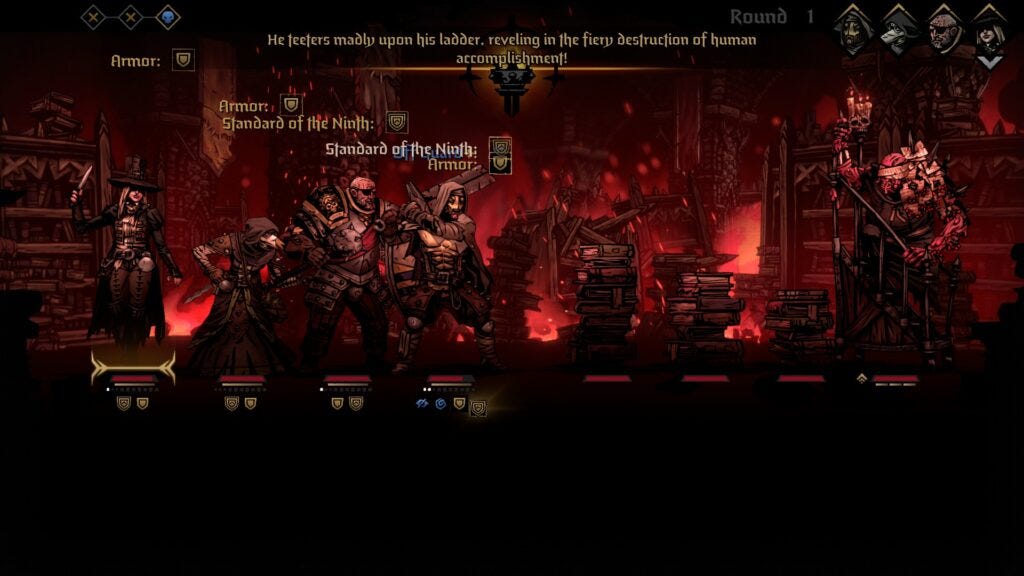
The duration of skills is also different. In the first game, skill duration was based on rounds. If someone could defend another character for a round, that meant they were defending for every attack.
Now, every buff and debuff is based on the activation of it. If an enemy has the dodge buff on them, it will never expire on its own — you must attack the enemy and either have the attack connect or miss in order to remove the buff, or a skill that cancels dodge. Support skills are now more important than ever with their ability to either buff your team or counter enemy buffs. As another point, most healing is no longer about RNG, and skills and items will now heal X% based on the healing itself. While this system does take some getting used to, it also means that skills that don’t do damage are far more impactful now. Because the token stays active, it means you never have to worry about using a skill and the enemy just ignores the impact until the duration runs out.
The redesigned classes greatly benefit from this new system, and you’ll need to figure out how to best build your team around the abilities. Another new feature finds that each class has “paths” that act as class variations when they are unlocked. These variations will change elements of the class, and even some of the skills, which adds further interesting choices to your party compositions.
These changes add up to a game that really doesn’t play like the original Darkest Dungeon, and that also means the difficulty of this one is harder to explain.
A Long Road Ahead
The redesigned combat and skills of Darkest Dungeon 2 also present a far different feeling when it comes to combat. In the original game, balancing was kind of all over the place; players didn’t always have access to a dedicated healer, attacker, buffer, etc. Because of the run focus now, you aren’t really losing time when you lose, as that just means you’ll start a new run and unlock new things.
But the individual battles and design are far harder compared to the first game. Enemy battles are now more puzzle-like than they were originally. It’s no longer about worrying if the enemy will do a lot of damage, but about what buffs and debuffs they will use against you. Battles can go on for far longer than they did in the first game thanks to the redesigned rules. Party members do get access to some really great support skills — the highwayman gains a skill that allows them to remove and steal enemy buffs. While many skills have limited uses during battle, enemy skills that can buff their entire side or make them stronger, have no such limitation. Bring the wrong party to the wrong encounter, and combat drags to a halt as you’ll have to try and deal with all their buffs. If an enemy is about to unleash some super strong attack, your only measures to mitigate that are to either buff your party’s dodge chance, reduce the enemy’s damage, or try to reduce their accuracy. If your party doesn’t have any of those options, or the enemy resists them… well, good luck with that.
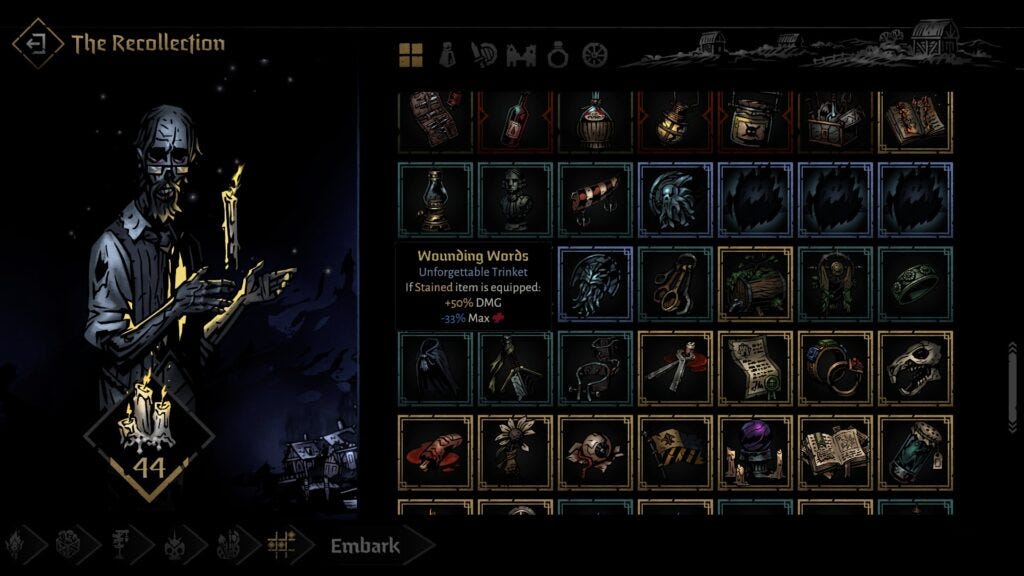
As a form of compensation, items and trinkets have also received a redesign. Like before, you can find character-specific trinkets that change or modify their skill behavior. Many trinkets now come with different rarities — with the common or lower version having a debuff to compensate, while the rarer ones just give you a benefit. Some have specific synergies based on the second trinket or what items that character has equipped.
Item design is far different now with items that can only be used at the inn and those that can only be used for combat. Inn items can heal or provide a buff until the next inn site. Combat items greatly vary in terms of their utility, but they all share one thing in common — a combat item does not use the character’s action for its turn. This is also there to help balance the increased focus on buffs and debuffs, with items that can inflict them, cure them, or add functionality that your team wouldn’t have otherwise.
So with all that said, it’s time to try and answer the question about why you’re reading this: Is Darkest Dungeon 2 better than the first?
A Different Dungeon
Darkest Dungeon 2’s M.O. seems to be to separate itself as far as it can from the design of the first game. If you’re going into this one expecting a similar experience, or using your knowledge from that one to help you here, you are going to be sorely disappointed. For a kind of Darkest Dungeon 1.5, I would recommend checking out Black Reliquary which is in early access.
For this one, I feel that some of the changes in effect make the game more punishing at the start compared to the first game. Building an effective party this time around is more complicated thanks to the buff/debuff combo system. Take the Leper for instance: at its base, the Leper will constantly have a chance of gaining the accuracy debuff as a part of his class. To counter this, you need to build a party that works with the Leper, which also means understanding what that means and unlocking said classes and skills.
So many of your deaths in this game are going to come down to a lack of information. There are several bosses in the game that will punish you even on the very first turn if you don’t already know about their behavior. Speaking of, a better explanation for some of the enemy effects would help. Many enemies can get buffed in a way that unlocks a super powerful skill, which the game won’t tell you about, and leaves it up to you to get smacked by it to then learn about it. The game really needs to do a better job of instructing players on item use and knowing how to prepare for an expedition, as that’s just one of many parts where you can end up ruining your run before you even start. The general UI, at least in some spots such as the inn interface, feels more convoluted than it needs to be, often having to switch back and forth between tabs to get basic information.
The focus on runs is another polarizing point. In the first game, a dungeon run could take 15–30 minutes on the short end, or 60–90 minutes on the longer side. Here, runs are going to be at a minimum of one hour due to the size of the maps. And one thing that does carry over from the original — the downward spiral effect that can happen. Have poor random encounters, characters start hating each other, and the run can really become annoying to keep playing.
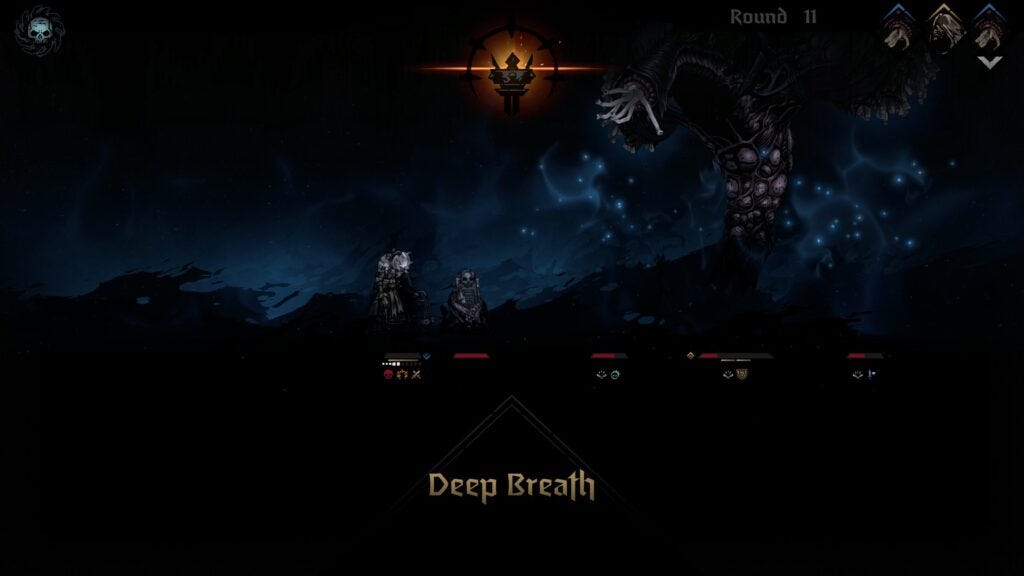
In a way, it feels like I’m jumping through more hoops to enjoy this game compared to the first. The rogue-lite side was designed to both pad out the game and incentivize someone to keep playing. But it feels like way too many things are locked away at the start, especially the inn items that can provide substantial buffs for each area, and enough skills so that characters can have different ways of countering the enemies they’re facing. A fully unlocked team, with all their skills, buffs, and counter skills is when the game really comes to life, but that’s going to take several hours of playing, dying, and unlocking, to get to that point.
Because of that, it doesn’t feel like the combat system is that interesting nor does it provide tactical choices at the start. If the enemy has a buff that my party doesn’t have an item or skill to counter, then they can just keep spamming it. So much of the success or failure, or even if you enjoy the upcoming run, is going to be dependent on the group you pick at the very beginning. This in and of itself feels counterintuitive to roguelike and roguelite design, where the build you start with will be modified and changed based on the decisions you make in the run, not the other way around. There were several times when the enemy compositions I ran into were so annoying that I just ended up abandoning the run out of having to spend 10+ minutes apiece dealing with them with the wrong party. Some people will probably argue that you can beat many of the challenges with the starting team or without unlocking skills, but that requires advanced knowledge on exactly who to bring to an area, what areas to do, and what inn buffs and items you’ll need the most.
In a way, the developers have figured out how to reverse the difficulty curve of the game compared to the first one. In DD 1, again, the difficulty of the game spiked at the final dungeon and became very punishing because of it. Here, all that spikiness is front-loaded — your first 3 to 5 hours of this game are going to be horrible to play, as it’s all going to be about learning through failure and getting the unlocks. My best advice for you reading this is to not care about progressing the story, and focus on unlocking all the classes and all their respective skills before playing the game “for real.”
DD 1 vs DD 2
Here’s the tough part of this analysis: which game is better? Taken on its own, I do feel Darkest Dungeon 2 is a stronger game mechanically speaking, with far more advanced combat and ways to play. I like the redesigns of the classes to make them both stand out more and further differentiate what they bring to each encounter. However, I would also say that this is not a good follow-up and feels like a complete teardown of everything that attracted people to the first game. If you hated the original or felt that it was too punishing due to its design, I highly recommend checking out the sequel, as all the frustrating elements are either mitigated or completely removed. It is, however, an example of what not to do with a rogue-lite experience — locking too many necessary and enjoyable elements away from the player at the start and forcing them to unlock enough things to start to experience the game properly.
The problem is that a bad intro is worst than a bad ending. I can already tell that there are going to be plenty of people who will give up playing this game long before they get to the good parts. The order and opening skills for characters should have been given a bit more scrutiny. Some classes feel horrible and unfinished until they get some of their later skills, while other skills feel too situational in a game like this to have when you need to decide which ones to include.
Darkest Dungeon 2 is truly a rogue-lite, with all the good and bad that it entails. There is an amazing game here…after about 3 hours of prep work to get to it.
Comments
Sign in or become a SUPERJUMP member to join the conversation.
